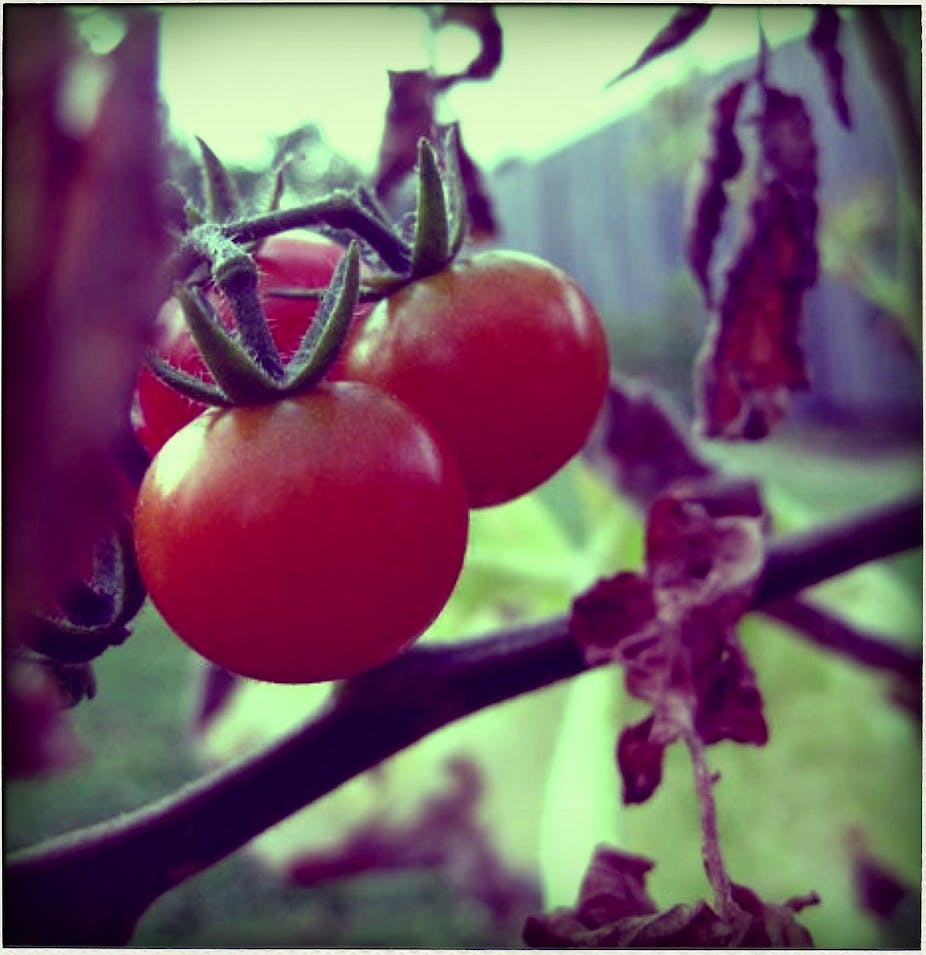Food. It is the great unifier of place and race, the common ground sustaining our very existence. Why then, does food production feature so minimally in public space and urban design?
Under the weight of looming threats to energy, population and economy, the time is ripe to rethink our design focus.
Traditionally, urban design has been dominated by the use of ornamental exotic and indigenous plants while edible species have been minimally utilised.
Now, as we move towards a potential crisis in food production it is more important than ever to rethink our design practices.
The past century’s unprecedented population explosion (four billion since 1950) has been carried on the back of cheap fossil fuels. Half of the world’s population currently survives on the extra calories produced from synthetic nitrogen, a by-product of natural gas with the additional unpleasant side effect of acidifying the soil.
Alarmingly, oil production peaked in 2006 according to economist Fatih Birol.
Add an unstable climate into the mix and we have a recipe for potential disaster for a food system reliant on stable and predictable climate patterns for yields, efficiency, and returns on investment.
Australia’s population is largely concentrated in urban centers, yet our agriculture takes place in the rural fringe – despite some of the best agricultural land existing within cities themselves (the Melbourne and Adelaide plains and the Sydney basin are three such examples).
In a predominantly infertile land like Australia, increased urban sprawl pushes food production further into less productive land. The “urban disconnect” from food production also separates consumers from food practices.
Forty percent of Australia’s food is currently produced in the Murray Darling basin. It is under tremendous pressure due to water scarcity and politics surrounding mis-management.
Under the pressures of economic growth, our current industrial production of food relies heavily on chemical fertilisers and pesticides. Gross wastage occurs as produce fails to meet the cosmetic standard of retailers.
In 2004, Australia threw away $5.3 billion of food and 25-50% of fresh produce is still currently discarded for not meeting the generic size, weight and cosmetic demands of supply chains.
Dominated by a duopoly that controls around 80% of the retail market, the Australian food system’s resilience in the face of environmental challenges is significantly compromised. (This is to say nothing of the quality of the food itself, reduced through practices such as irradiation, cold storage, ethylene gas and biotechnological manipulation).
By repositioning agriculture into the urban sphere, we have the opportunity not only to reconnect with food production, but also to create and enjoy beautiful and uplifting spaces benefitting the health of the community at large.
There are already significant movements in urban agriculture, such as community gardening, school and kitchen gardens, permaculture and guerrilla gardening.
These are usually relegated to neglected or private spaces. They lack social visibility, remaining at the margins of public space.
There continues to be a significant proportion of the urban public domain that remains barren and inactivated.
If urban designers and landscape architects can incorporate edible species into their design paradigms, then formalised public spaces have the capacity to become blossoming centres of productive growth.
The aesthetic skills of the designer, combined with productive species such as fruit and nut trees, vines and climbers and vegetables and herbs, can create truly magical spaces of transcendent delight (and edible return).
Edible landscapes, if successfully realised, could create environmental, social, economic and health benefits for the community at large. They also engage ongoing community participation.
As with any shift in practice, there are undeniable challenges. These include questions of plant knowledge, public liability, maintenance, risks of soil and air pollution and the requirements of low salinity irrigation water.
It is worth noting though, that all design practices have embodied risks and maintenance regimes. Exotic species, for example, typically require more watering, feeding, mowing, pruning and leaf collection (not to mention the legal risks of slip hazards from deciduous leaves). Native species need specific techniques such as pruning for regrowth and fire for seed dispersal.
We already know a lot about maintaining urban vegetation. It is a relatively simple task learn edible plant regimes such as feeding, dusting, pruning and harvesting. Opportunistic members of the public are likely to take care of fruit yields. This should mitigate concerns about slippage and falling fruit.
There are already several precedents for the local use of edible species in public spaces. The 1854 design of Adelaide’s Victoria Square incorporated almond and olive trees. Energy Architecture’s Aldinga Arts Ecovillage uses edible species. McGregor Coxall’s Atlas Apartments in Victoria Park in Sydney has orange trees and aloe vera.
VicUrban is constructing a project in Dandenong South, Melbourne, with street tree orchards. Fifth Creek Studio’s “edible roof and vertical gardens” are being built in the GP Plus Health Care Centre in Marion, Adelaide.
At the masterplan stage are Taylor Cullity Lethlean’s Victoria Square/Tarndanyangga; McGregor Coxall’s Callan Park; HASSELL’s Bowden Urban Village; WAX Design’s Jacob’s Creek Visitor Centre and Oxigen’s Weston Park.
This is a positive signal that edible landscapes are becoming embedded into the core palette of designers of the public realm. It gives weight to a burgeoning new era for responsive and activated edible public space.

